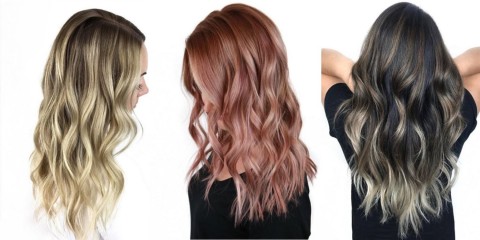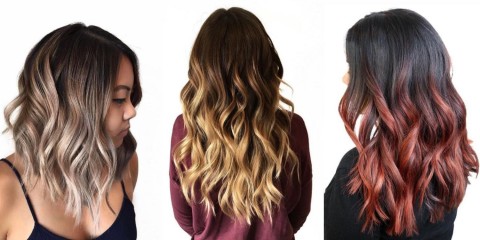NEW YORK--(BUSINESS WIRE)--Here is how to understand the difference between ombré, balayage and everything in-between, and how to figure out the best hair color solution for you!
What is balayage?
In French, balayage means “sweeping.” In the hair color world, balayage highlights are hand-painted or swept along the surface of the hair. The application begins away from the roots and gradually becomes heavier as it travels along the section, culminating in the heaviest application of lightener or hair color at the ends. Because the hair color or lightener is concentrated on the surface of each section, the underside remains darker, which gives the hair a very natural, dimensional effect.
Balayage can be done on any hair color, from blonde hair to red hair to brown hair, although it’s typically not the first choice for super dark brunettes. It’s beautiful on long hair and on medium-length hair.
The different types of balayage:
Because balayage is a hand-painting technique, the artistry of your hair stylist comes into play and allows for many variations and beautiful color compositions. Hair color artists might combine several shades, for example, for a shimmering, dimensional result.
If your hair is dark, they may opt for a foilayage technique. In foilayage, instead of allowing the balayage highlights to process in the air after they are applied, they are wrapped in foil, which provides more heat, and therefore amplifies the lightening process.
Balayage may also be combined with conventional highlights placed closer to the face, or with fine, baby-lights placed around the face and hairline for a complexion-boosting glow.
What is ombré?
In French, ombré means “shade” or “shadow.” In the hair color world, ombré is a dramatic, two-toned hair color effect that is typically darker at the top and lighter on the bottom. Often the dark, top section is your natural hair color shade and the bottom section is lightened with hair lightener.
An ombré hairstyle can also be any color combination—natural blonde, brown or red, or something unconventional like pink, blue, green or purple. It’s versatile, customizable and suitable for most long and medium hair lengths.
A big plus with ombré hair color is that it’s easy on the budget. You don’t have to touch it up very often since the top section remains dark. The overall look of ombré hair color can change as your hair grows out, which many clients enjoy!
The different types of ombré:
A subtler version of ombré is called sombré. In a sombré hairstyle, the contrast between the two tones is softer. Another variation is called color melting. In color melting, two or three hair color shades may be used on each strand, and each shade is blended with the side of the hair color brush so that they appear to melt into each other. Like ombré, color melting can be done with natural-looking hair color shades or with any of the fun colors of the rainbow!
About Matrix Professional
MATRIX, the leading professional hair care and hair color company in the United States, is part of Loreal USA's Professional Products Division. Founded in 1980, MATRIX is committed to the development of the salon professional and offers a wide range of products including: Biolage, SOCOLOR, Color Sync, Logics, Light Master, Total Results, Style Link, Oil Wonders and Vavoom (MATRIX professional products are available only in salons and can be guaranteed authentic when purchased from authorized retailers). Visit Matrix.com for hairstyle and haircolor inspiration as well as MATRIX trends and tips! Professionals visit www.matrixprofessional.com for techniques, formulas, salon resources and much more!



